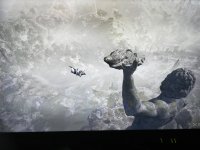Greenstone.Walker
Adventurer
On the other hand, history has never been accurate historically.Never been accurate historically,
There wasn't any such thing as the "Greek pantheon." Every city-state and region had its own take on the gods. That's where we get Athena Alea, Athena Polias, Athena Nike, Aphaea and so on. In Athens she was the patron of heroes; in Sparta the patron of metalworkers.
Additionally, much of history was written by other cultures. For example, much of what we know (or think we know) about Celtic religion was written by the Romans, and thus tainted by their propaganda.

